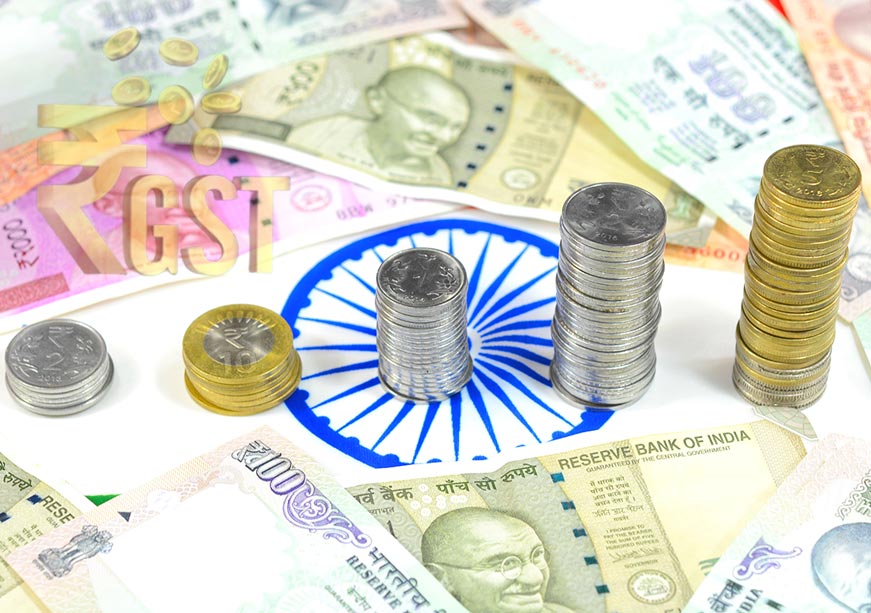-
CENTRES
Progammes & Centres
Location
Streamlining GST into fewer slabs promises relief for households, clarity for businesses, and a renewed push for India’s consumption-led growth.

Image Source: Getty Images
The 56th meeting of the Goods and Services Tax (GST) Council, chaired by Union Finance Minister Nirmala Sitharaman, may well mark a turning point in India’s indirect tax regime. By pruning the unwieldy structure of multiple slabs into a more rational two-rate system, the Council has moved toward what economists have long advocated for—simplicity, efficiency, and growth-oriented taxation.
The headline change is the removal of the 12 percent and 28 percent GST slabs, creating a streamlined system with fewer rates. Essential commodities—ranging from ultra-high temperature (UHT) milk and paneer to a wide range of everyday household items—have seen significant reductions in GST. In some cases, rates have dropped from 12 percent or 18 percent to 5 percent, and for certain goods, to zero. The most important among these is the exemption granted to 33 life-saving medicines used for the treatment of cancer, rare diseases, and other chronic ailments. These have been moved from a 5 percent GST to nil.
By pruning the unwieldy structure of multiple slabs into a more rational two-rate system, the Council has moved toward what economists have long advocated for—simplicity, efficiency, and growth-oriented taxation.
This is not a trivial shift. Medicines are goods with highly inelastic demand—people cannot defer or reduce consumption of them regardless of price. For elderly households and families with chronic health burdens, the previous GST regime resulted in higher costs that could not be avoided. Rationalisation here is not only an act of fiscal prudence but also a gesture of compassion. If anything, the ambit of exemptions should be expanded further to include widely used drugs such as amoxicillin.
Another notable decision has been the complete exemption of GST on individual health and life insurance premiums. Previously taxed at 18 percent, this exemption makes critical insurance products more affordable in a country where the social security net remains thin. By incentivising risk protection, the GST Council has indirectly enhanced financial resilience for households—a long-neglected but crucial element of India’s development agenda.
At the other end of the spectrum, levies on luxury goods and conspicuous consumption have been hiked to 40 percent. This is both equitable and economically logical: higher taxes on luxury consumption free fiscal space for the state while preserving the purchasing power of the middle and lower-middle classes, whose spending forms the backbone of India’s growth trajectory.
Two macroeconomic impulses are at play here. The first is the government’s sustained push towards higher capital expenditure over successive budgets—a strategy designed to crowd in private investment. The second is the calibrated encouragement of consumption, particularly among India’s burgeoning middle class.
The GST rationalisation, therefore, does more than simplify taxation. It directly boosts household disposable incomes, encourages spending, and sustains India’s consumption-led growth model.
It is worth emphasising that India’s growth over the last three decades has been overwhelmingly consumption-driven. Private final consumption expenditure still accounts for around 58 percent of gross domestic product (GDP), far higher than in China (38 percent) or many advanced economies. More importantly, the marginal propensity to consume of the Indian middle class is significantly higher than that of the affluent. In simpler terms, every rupee saved in tax by a middle-class household is far more likely to be spent, creating a multiplier effect in the economy.
The GST rationalisation, therefore, does more than simplify taxation. It directly boosts household disposable incomes, encourages spending, and sustains India’s consumption-led growth model. At the same time, it contributes to poverty reduction, since India’s poverty metrics are defined by consumption thresholds. Enhanced affordability of essentials—from food to medicines—provides the poorest segments with a tangible economic reprieve.
Beyond its distributive logic, the move improves the business environment. India’s earlier GST structure was among the most complex in the world. Multiple rates bred confusion, raised compliance costs, and created avenues for disputes. Four clear sources of inefficiency crept into the tax system with such a structure. First, it caused confusion and led to disputes over classification. With 0 percent, 5 percent, 12 percent, 18 percent, and 28 percent (plus cess), businesses often struggled to classify products correctly. A nominal change in processing or packaging could shift an item into a higher/lower slab (for example, fresh vs. frozen food, branded vs. unbranded products). This led to frequent litigation and compliance disputes. Second, the 5-slab structure led to high compliance costs. Firms had to reconfigure accounting, billing, and IT systems to capture the right slab for every product/service. Smaller enterprises faced disproportionate costs just to remain compliant. Third, it also led to a distortion of consumption choices. Products with similar demand characteristics (for example, food items at 5 percent, but others at 12 percent) ended up in different slabs, creating artificial differences. This clearly went against one of the classical canons of taxation that alludes to horizontal equity. Fourth, it caused a ‘revenue versus growth’ dilemma, and at times led to the possibility of lafferisation. Higher slabs (28 percent plus cess) discouraged consumption of certain goods but were vital for state revenues. In the process, this GST structure caused a tug-of-war between efficiency and revenue needs.
On a different note, the existence of multiple slabs was a clear deviation from globally accepted norms and made India look pale on the global map of tax efficiency and rationalisation. Most countries have one or two VAT/GST rates: Australia has a single GST rate of 10 percent; New Zealand has 15 percent, Singapore has 9 percent, and the EU typically applies a standard VAT of 17–25 percent plus one reduced rate (5–10 percent) for essentials. India’s five rates plus cess made it an outlier, hurting ease of doing business.
India’s reduction of the number of slabs in its indirect taxation structure enhances the credibility of its tax system, signals seriousness about reforms, and aligns with global best practices.
Now, by reducing the number of slabs to three, the GST Council has reduced friction for goods producers, service providers, and tax administrators alike. Lower compliance costs directly improve business competitiveness. India’s reduction of the number of slabs in its indirect taxation structure enhances the credibility of its tax system, signals seriousness about reforms, and aligns with global best practices. The lowering of taxes on essentials while raising them on luxuries balances equity and efficiency, thereby complying with two critical canons of taxation—horizontal equity and vertical equity. A rational GST system will also make India a more attractive investment destination—much needed at a time when global capital is footloose and geopolitical realignments are redrawing supply chains.
This rationalisation is no panacea. Questions remain about revenue neutrality for states, the design of compensation mechanisms, and the continuing need to widen the tax base. However, as a structural reform, the Council’s decision balances fiscal prudence with distributive justice.
While reducing the burden on essential goods and services and easing compliance for businesses, it reinforces India’s growth engine—domestic consumption. The exemption for health insurance and life-saving drugs, in particular, signals sensitivity to the lived realities of citizens, while the higher tax on luxuries reflects a pragmatic redistributive intent.
If India is to sustain its growth momentum in an uncertain global economy, the combination of increased capital expenditure and strengthened consumption will prove vital. The 56th GST Council meeting, by tilting the balance towards both efficiency and equity, may have just set the tone for the next phase of India’s economic journey.
Nilanjan Ghosh is Vice President - Development Studies at the Observer Research Foundation.
The views expressed above belong to the author(s). ORF research and analyses now available on Telegram! Click here to access our curated content — blogs, longforms and interviews.

Dr Nilanjan Ghosh heads Development Studies at the Observer Research Foundation (ORF) and is the operational head of ORF’s Kolkata Centre. His career spans over ...
Read More +